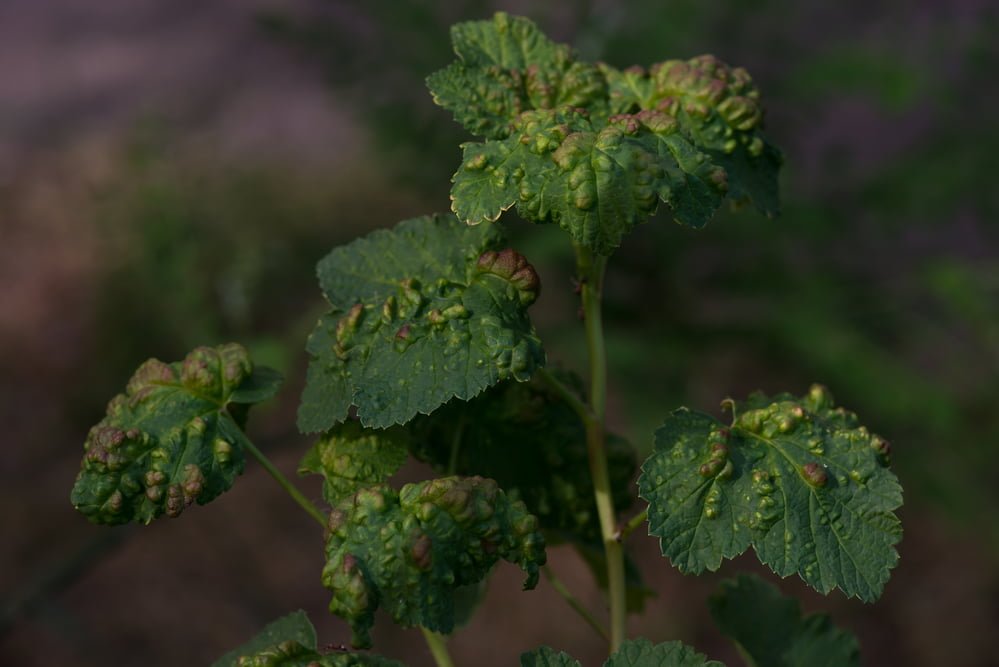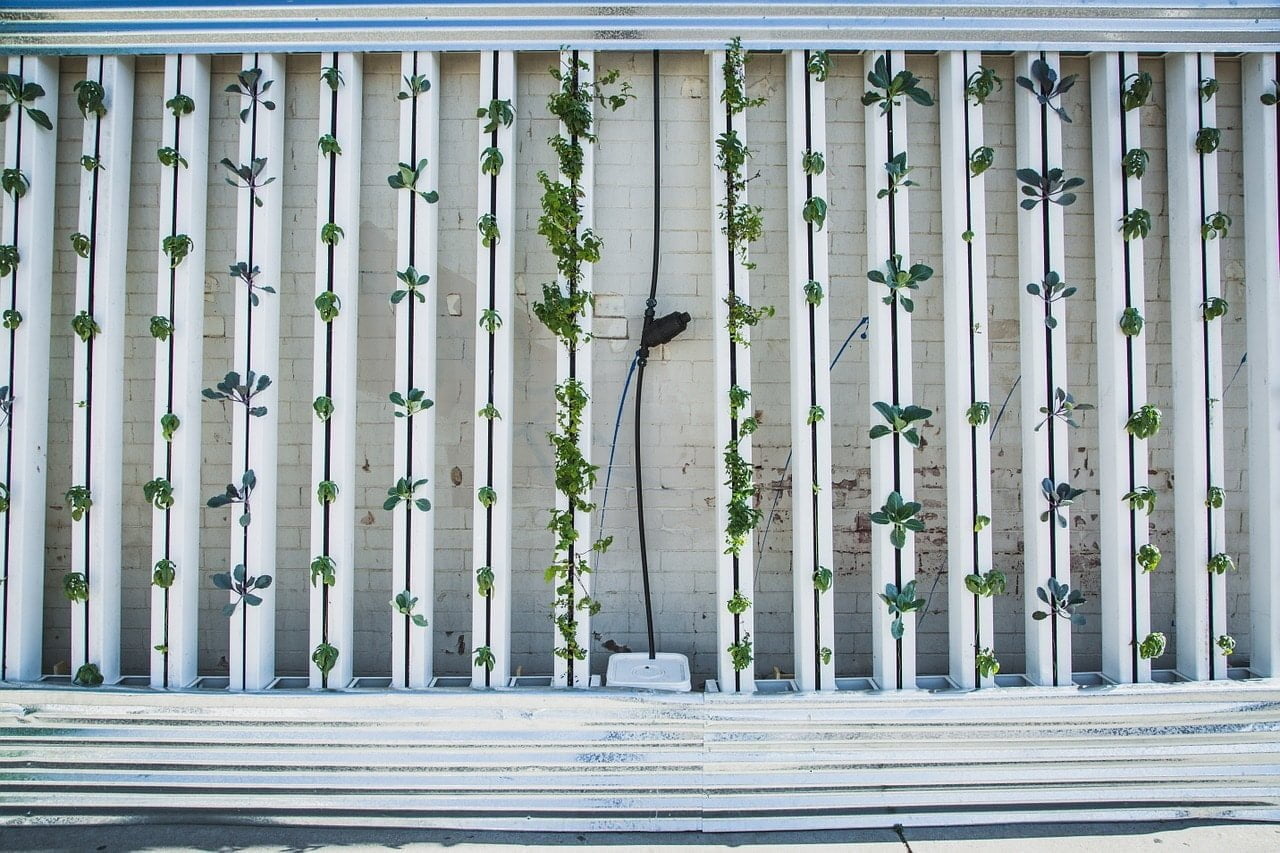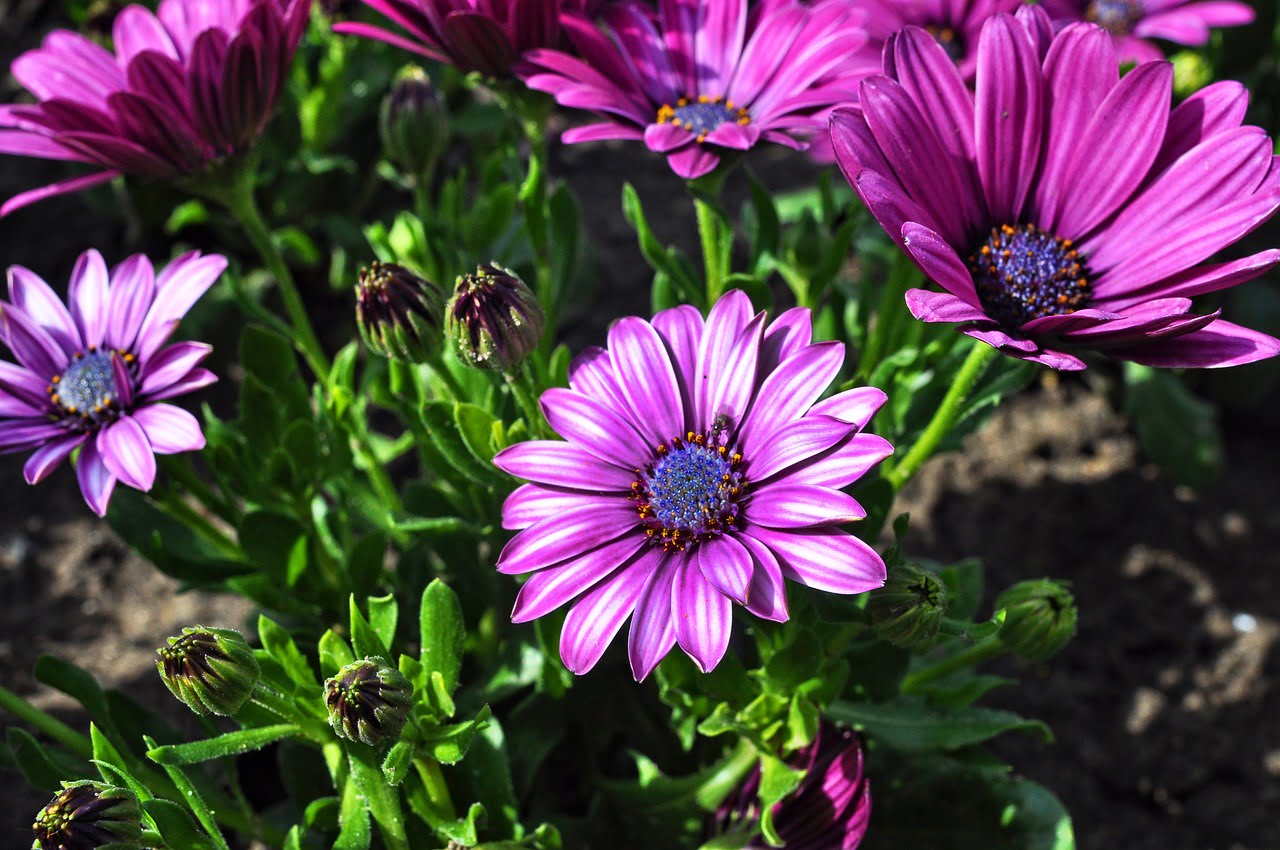Are you tired of finding bugs munching on your precious vegetable garden? It’s time to take action and protect those tasty crops!
Don’t worry, there’s no need for harsh chemicals that could harm not only the environment but also our health. Lucky for us, organic pest control methods are here to save the day.
In this article, we’ll explore some easy-to-follow tips and tricks that will help keep those pesky pests at bay while keeping everything safe and natural in your garden.
By using these effective strategies, you can finally relax knowing your beloved vegetables are well-guarded from unwanted invaders. So let’s dive into a world where organic is king and conquer those creepy-crawlies once and for all!
Understanding Common Garden Pests
Before we dive into the world of organic pest control, it’s essential to know who our tiny adversaries are. The first step in protecting your beloved vegetable garden is understanding the common pests that might be causing problems for your plants.
Some well-known troublemakers include aphids, caterpillars, slugs, snails, and various beetles. Now that you’re aware of these potential threats, let’s talk about why they can be so dangerous for your garden.
These pesky critters love munching on tender leaves and stems, which can lead to stunted growth or even death for your precious vegetables. Not only do they cause physical damage but some pests also transmit plant diseases as they feed.
Remember – knowledge is power! By learning more about these pests and their habits, you’ll feel safer knowing how to identify them and prevent any harm from coming to your veggies.
So what can you do? Fear not because there are many ways to fight back without using harsh chemicals. Organic pest control methods like introducing beneficial insects (ladybugs are great at combating aphids), setting up barriers (copper tape helps deter slugs and snails), and creating a healthy environment for your plants will go a long way in keeping those bothersome bugs at bay.
With a little effort and vigilance, you too can protect your vegetable gardens from unwanted visitors while maintaining an eco-friendly sanctuary for both yourself and Mother Nature.
The Importance Of Healthy Soil
Soil health is an important factor in growing crops.
Nutrients in the soil provide plants with the nourishment they need to thrive.
The biology of the soil is equally important because it helps break down organic matter and increase water retention.
A soil’s structure affects the air and water that goes in and out of it, so it’s important to have a mix of small and large particles.
We can improve soil health by adding organic matter, like compost, to provide nutrients and improve soil structure.
To protect our crops from pests, we can use organic pest control methods like companion planting and crop rotation.
Soil Nutrients
Did you know your soil’s health is the secret weapon to keep pests away from your vegetable garden? When plants receive the right nutrients, they grow stronger and are more resistant to harmful bugs. So, let’s dive into how important soil nutrients are in organic pest control for our beloved gardens.
First things first: what makes healthy soil? It all comes down to a mix of essential elements like nitrogen, phosphorus, potassium, calcium, magnesium, and sulfur. These nutrients not only help our veggies grow big and delicious but also create a natural defense system against pesky invaders!
By testing your soil with a simple kit or sending it off to a lab, you’ll find out exactly which nutrients may be lacking so that you can adjust accordingly. Now that we understand the vital role these nutrients play in keeping our vegetables safe and sound from unwanted guests, it’s time to learn some ways to improve our soil health.
Organic composts made from food scraps or animal manure can provide an extra boost of nutrition while adding beneficial microorganisms. Cover crops such as clover or rye will contribute valuable nitrogen back into the ground during their off-season growth. And don’t forget about natural fertilizers – seaweed extracts or fish emulsions work wonders without any harmful chemicals!
With these tools at hand, we’re one step closer to having a flourishing garden free of destructive pests.
Soil Biology
Now that we’ve got the basics of soil nutrients covered, let’s dig a little deeper and explore the fascinating world of soil biology.
You see, healthy soil isn’t just about having the right mix of nutrients; it’s also teeming with life! We’re talking about billions of microscopic organisms like bacteria, fungi, protozoa, and nematodes working together to create an environment where our plants can thrive.
These tiny creatures play a crucial role in breaking down organic matter into plant-available nutrients while also helping to improve soil structure and water retention.
But wait – it gets even better! Some of these beneficial microorganisms actually form partnerships with our veggies’ roots, protecting them from harmful pathogens and making sure they get all the essential nutrients they need. It’s like having a team of mini bodyguards keeping your garden safe!
So next time you’re tending to your vegetable plot, remember that beneath the surface lies a whole ecosystem working hard to keep everything running smoothly.
By nurturing this hidden world through practices such as composting and using natural fertilizers, we’ll not only enjoy healthier plants but also contribute to a safer environment for ourselves and future generations.
Soil Structure
Now that we’ve delved into the world of soil biology, let’s keep digging and discover another vital aspect of healthy soil: its structure.
You see, it’s not just about having loads of microscopic helpers in our garden; it’s also crucial to have a well-built foundation for those little guys to work their magic!
Good soil structure means there are plenty of air pockets and channels between particles, allowing water to drain easily while providing space for roots to grow and access essential nutrients.
When your garden has great soil structure, plants can establish strong root systems that help them stay anchored during storms or high winds – talk about safety first!
Plus, these robust root networks allow veggies to soak up even more nutrients from the depths below.
So by focusing on improving this hidden framework beneath our gardens’ surfaces, we’re creating an environment where both microorganisms and plants can thrive together.
In order to build and maintain fantastic soil structure in your vegetable patch, consider incorporating organic matter like compost or aged manure regularly.
These additions will feed your friendly microbes while also keeping your garden safe from erosion caused by heavy rainfall.
Remember, working towards healthier soil is an investment in the safety and productivity of your garden – so why not start today?
Encouraging Beneficial Insects
Did you know that over 90% of the insects found in gardens are either helpful or harmless? That’s right! Many beneficial insects act as natural pest control, keeping harmful pests away from your precious vegetable crops. Encouraging these helpful critters to make a home in your garden can provide an organic solution for protecting your harvest.
One way to attract good bugs is by planting flowers and herbs near your veggies. These will not only add beauty but also serve as food sources for beneficial insects like ladybugs, lacewings, and parasitic wasps. Some great choices include marigolds, yarrow, dill, and fennel.
Providing shelter with plants such as tall grasses and shrubs can also help create a welcoming environment for our insect friends. Remember to avoid using chemical pesticides since they can harm both bad and good insects alike.
As you incorporate these ideas into your gardening routine, take time to observe how nature works together to protect your vegetables from unwanted pests. With the help of these incredible allies, you’ll be well on your way to enjoying a safer and more bountiful harvest without relying on harsh chemicals.
So go ahead – give them some room to thrive in your garden while they keep those pesky intruders at bay!
Introducing Natural Predators
Choosing natural predators is key to organic pest control in vegetable gardens. When deciding which predators to introduce, consider factors like climate and the types of pests you want to get rid of.
Attracting natural predators is also important – provide them with food and shelter, and they’ll do the rest!
Lastly, make sure you monitor your garden closely to ensure that the predators are effectively controlling pests.
Choosing Natural Predators
It’s important to note that not all bugs are bad for your garden. In fact, some insects can actually help protect your plants from harmful pests! These helpful critters are known as natural predators, and they’re a fantastic way of maintaining the balance in your vegetable garden without resorting to harsh chemicals or pesticides.
By encouraging these beneficial insects to make themselves at home among your crops, you’ll be providing a safe environment for both them and your precious veggies. When it comes to choosing the right natural predators for your garden, there are several options available.
Ladybugs (or ladybirds) are an excellent choice because they love feasting on aphids – one of the most common plant-eating pests out there. Another great option is green lacewings; their larvae also have a taste for aphids, as well as other soft-bodied insects like whiteflies and mealybugs. If slugs and snails are causing problems in your garden, consider introducing ground beetles into the mix – these speedy hunters will happily munch away on those pesky mollusks!
Of course, it’s not just about which creatures you introduce into your garden but also how you attract and support them once they’re there. One simple way is by planting flowers that provide food and shelter for our insect allies: think nectar-rich blooms like marigolds or sunflowers, or small shrubs such as lavender or rosemary where beneficial bugs can hide from predators themselves.
And don’t forget that many birds dine on harmful insects too – so why not set up bird feeders and nesting boxes to encourage feathered friends into your backyard? With this approach, you’ll create a thriving ecosystem within your vegetable patch that keeps pest populations under control while keeping things safe for everyone involved!
Attracting Natural Predators
So, how can you attract these helpful natural predators to your garden? It’s easier than you might think! By creating a welcoming environment for them, you’ll encourage these beneficial insects and birds to stick around and help keep pest populations in check.
Start by planting flowers that provide food and shelter for our insect allies: consider nectar-rich blooms like marigolds or sunflowers, or small shrubs such as lavender or rosemary where they can hide from their own predators.
In addition to providing food sources for these helpful critters, make sure there are plenty of places for them to nest and lay their eggs. For example, setting up bird feeders and nesting boxes will invite feathered friends into your backyard who love snacking on those pesky bugs.
The combination of plants and homes for the beneficial creatures will create a safe haven for them while also protecting your beloved vegetable patch!
By focusing on attracting natural predators instead of using harsh chemicals, not only will you be keeping things safer for yourself and your family but also contributing to a healthier ecosystem within your garden.
And with this thriving community of predator-prey relationships at work, you’ll be able to enjoy an abundant harvest without worrying about unwanted pests ruining all your hard work!
Companion Planting For Pest Deterrence
Now that we’ve explored the benefits of introducing natural predators to your garden, let’s move on to another effective organic pest control method: companion planting.
This approach involves strategically placing different plants near each other in order to deter pests and create a healthier environment for your crops. By choosing combinations wisely, you can encourage beneficial insects while keeping pesky ones at bay.
Here are three popular plant pairings that can help keep unwanted bugs away from your vegetable garden:
- Basil and Tomatoes: Basil not only enhances the flavor of tomatoes when grown together but also repels various tomato pests like hornworms.
- Marigolds and Cabbage: Marigolds emit a strong scent that deters cabbage moths, helping protect your cabbages from caterpillar infestations.
- Nasturtiums and Squash: Nasturtiums attract aphids, luring them away from squash plants; they also provide shelter for predatory insects like ladybugs which feed on aphids.
Companion planting is an excellent example of how harnessing nature’s wisdom can lead to safer and more productive gardens without relying on harmful chemicals or unnatural practices.
As you plan your next vegetable garden layout, consider incorporating some strategic plant pairings into your design – it might just be the key to protecting your valuable crops from destructive pests. Remember, working with nature rather than against it will always yield better results in the long run and contribute positively towards the health of our planet as well!
Physical Barriers And Traps
One of the most effective ways to protect your vegetable garden from pests is by using physical barriers and traps. These methods are not only safe for you and your plants, but they also help maintain a healthy ecosystem in your garden. In this section, we’ll discuss different types of physical barriers and traps that can be used to keep those pesky critters at bay.
| Barrier/Trap | Description | Pros |
|---|---|---|
| Row Covers | Lightweight fabric or netting laid over crops | Protects against insects, birds; allows sunlight & water through |
| Fences | Enclosures made of wood, metal, or plastic | Keeps out larger animals like rabbits & deer |
| Sticky Traps | Coated with adhesive material | Captures flying insects |
These physical barriers work wonders in keeping unwanted guests away from your precious vegetables without causing harm to them or the environment. The table above lists some popular options along with their descriptions and benefits.
Now that we’ve discussed these various forms of protection for your vegetable garden, it’s time for you to choose which method works best for you! Remember, maintaining a natural balance within your garden will result in healthier produce and a more enjoyable gardening experience overall. So go ahead and give these organic pest control strategies a try – happy gardening!
Using Neem Oil For Pest Management
One effective method for managing pests in your vegetable garden is using neem oil. This natural product comes from the seeds of the neem tree, and it has been used as a pesticide for centuries. Neem oil works by disrupting the life cycle of insects, preventing them from feeding on your plants and laying eggs that would lead to future infestations.
Here are three easy steps to use neem oil effectively:
- Mix: Combine one teaspoon of cold-pressed neem oil with a quart of warm water and a few drops of dish soap. The soap helps the solution stick to plant surfaces.
- Spray: Apply this mixture directly onto affected plants early in the morning or late afternoon when temperatures are cooler. Be sure to cover both sides of leaves, as well as stems and flowers where possible.
- Monitor & Repeat: Keep an eye on your garden for signs of pest activity, reapplying every 7-10 days or after heavy rainfall.
Neem oil is not only efficient at controlling pests but also safe for you and the environment compared to chemical pesticides. When applied correctly, it won’t harm beneficial insects like bees and ladybugs that help keep harmful pests at bay naturally. Plus, neem oil degrades quickly in sunlight, reducing any potential risk to wildlife or nearby water sources if used responsibly.
So go ahead—give neem oil a try! Your precious vegetables will be protected while ensuring safety for yourself, your family, and our planet’s ecosystem too!
Homemade Organic Sprays And Repellents
Now that you have learned about the wonders of neem oil for pest management, it’s time to explore some homemade organic sprays and repellents. These solutions can be made from ingredients found in your kitchen or garden, making them an affordable and eco-friendly option. Plus, they’re just as effective at keeping those pesky critters away!
One popular homemade organic spray is a mixture of garlic, onion, cayenne pepper, and water. To make this powerful concoction, simply blend together one whole bulb of garlic (peeled), one medium-sized onion (peeled), one tablespoon of cayenne pepper powder, and two cups of water until smooth. Then strain the liquid through a fine mesh strainer into a spray bottle.
This spicy-scented solution will deter many pests like aphids, caterpillars, and whiteflies due to its strong smell.
Another great DIY method involves using essential oils as natural insecticides or repellents. Some commonly used essential oils include peppermint oil which repels ants and spiders; lavender oil which keeps mosquitoes at bay; eucalyptus oil to ward off flies; and rosemary oil which acts as an effective deterrent against beetles and other leaf-eating insects.
Just mix 20 drops of your chosen essential oil with two tablespoons of carrier oil such as olive or vegetable oil in a small bowl. Soak several cotton balls in this mixture before placing them strategically around your garden to keep unwanted pests away while also giving your outdoor space a pleasant aroma!
Diatomaceous Earth: A Natural Insecticide
Diatomaceous earth is a fantastic natural insecticide that you can use in your vegetable garden. It’s made from the crushed fossils of tiny, aquatic organisms called diatoms. These sharp little particles may not look like much to us, but they are deadly for many insects that might try to snack on your plants.
Using diatomaceous earth in your garden is simple and safe. Just sprinkle it around the base of your plants or mix it with water and spray it onto their leaves. As bugs crawl over this powdery substance, they get tiny cuts from the sharp edges, which causes them to dehydrate and die.
Don’t worry – diatomaceous earth won’t harm humans or pets! In fact, some people even eat small amounts of food-grade diatomaceous earth as a dietary supplement.
You’ll be amazed at how well diatomaceous earth works against pests such as aphids, slugs, snails, beetles, and more without using harsh chemicals. Plus, because it’s organic and doesn’t leave any harmful residue behind on your vegetables, you can feel confident knowing that you’re keeping both your family and the environment safe while protecting your precious crops.
So give diatomaceous earth a try in your vegetable garden today – you won’t be disappointed!
Preventative Measures And Garden Maintenance
Oh, you thought your garden would magically stay pest-free all by itself? It’s funny how we often think that our crops will just flourish without any effort or care. However, the truth is that a healthy vegetable garden requires regular maintenance and some preventative measures.
One crucial aspect of maintaining a thriving vegetable garden is proper plant spacing. Overcrowding can lead to poor air circulation, which in turn creates an environment where pests thrive. So be sure to give each plant enough room to grow and breathe.
Another essential practice involves rotating your crops every year, as this helps prevent the buildup of soil-borne pests and diseases. For example, don’t plant tomatoes in the same spot two years in a row; instead, switch it up with another crop like beans or lettuce.
A fantastic way to deter unwanted visitors from munching on your veggies is by creating a strong ecosystem within your garden space. One method for doing so involves companion planting – growing different types of plants close together that benefit one another by attracting beneficial insects or repelling pests naturally. For instance, marigolds are known to keep away nematodes while basil may help protect tomato plants from harmful insects such as hornworms.
By employing these simple yet effective techniques, not only will you have healthier crops but also peace of mind knowing they’re protected against pesky invaders!
Rotating Crops To Reduce Pest Populations
One simple and effective way to keep pests at bay in your vegetable garden is by rotating your crops. This means changing the location of different types of plants each growing season.
It might seem like a small change, but it can make a big difference when it comes to keeping your veggies safe from harmful insects.
When you rotate your crops, you’re not only helping to protect them from pests, but also improving the overall health of your soil.
Different plants require various nutrients and can deplete the soil if grown in the same spot repeatedly. By switching things up, you give the soil a chance to recover and replenish those essential nutrients that help your vegetables grow strong and healthy.
Plus, many pests tend to lay their eggs in or around specific plant species; moving these plants disrupts their life cycle and makes it difficult for them to find their favorite food source.
So go ahead and switch up where you plant your tomatoes, peppers, lettuce, and other veggies every year!
Your garden will thank you for it with healthier plants and fewer pesky bugs looking for an easy meal.
And remember: a happy garden leads to safer produce on your table – which is what we all want at the end of the day!
Monitoring And Assessing Your Garden’s Health
As the sun rises and sets on your thriving vegetable garden, it’s essential to keep a watchful eye on its overall health. Just like we need regular check-ups with our doctors, so too do our gardens require consistent monitoring to ensure their well-being.
In this section, we’ll explore ways to assess your garden’s health regularly and identify early signs of trouble before they become significant problems.
One of the wisest things you can do for your garden is to make frequent visits and observations. Take note of any changes in leaf color or texture, as these could be indicators of nutrient deficiencies or diseases that may affect your crops’ growth negatively. Pay attention also to insects – both beneficial ones such as ladybugs and harmful pests like aphids – as their presence could signal an imbalance in your garden ecosystem.
Observe how effective your organic pest control methods have been by checking for damaged leaves, chewed stems, or other tell-tale signs of unwanted visitors feasting on your precious plants.
By being proactive in maintaining your garden’s vitality through regular monitoring, you’re not only safeguarding the fruits (and vegetables) of your labor but also creating a harmonious environment where all living beings can thrive together.
Remember that caring for a healthy vegetable garden involves more than just watering and fertilizing; it demands vigilance, patience, and knowledge about natural predators and crop cycles.
So let us continue down this path towards bountiful harvests using nature’s wisdom at every turn!
Frequently Asked Questions
How Can I Identify The Specific Pests That Are Attacking My Vegetable Garden, And What Resources Are Available To Help With Pest Identification?
To figure out which pesky critters are munching on your precious veggies, you’ll need to do a bit of detective work. Start by closely examining your plants and looking for signs like chewed leaves, discolored or wilted stems, and tiny holes in the fruits or vegetables. If you’re lucky, you might even catch the culprits red-handed!
To help with identifying these pests, check out resources like local gardening clubs or extension offices where expert advice is available. You can also find helpful identification guides online or at your library that provide pictures and descriptions of common garden pests.
Remember, knowing what’s bugging your plants is the first step towards keeping them safe and healthy!
Are There Any Organic Pest Control Methods That Can Be Harmful To My Family, Pets, Or The Environment, And What Precautions Should I Take When Using Them?
Imagine your kids playing in the backyard, near your beautiful vegetable garden, where you’ve been using a homemade organic pesticide to keep pests at bay.
While it’s great that you’re choosing an eco-friendly solution for pest control, some methods can also be harmful to humans and pets if not used properly.
For instance, neem oil – a popular natural insecticide – might cause skin irritation or breathing problems when mishandled or overused.
To ensure everyone’s safety, always follow the recommended application rates and wear protective gear like gloves and masks when handling these products.
By taking necessary precautions with organic pest control measures, you’ll protect both your loved ones and the environment while still enjoying a bountiful harvest from your vegetable garden!
How Can I Prevent Pests From Becoming Resistant To The Organic Pest Control Methods I Am Using In My Vegetable Garden?
To keep those pesky pests from becoming resistant to the organic methods you’re using in your veggie garden, it’s important to mix things up a bit.
Don’t rely on just one method all the time – switch between different techniques like introducing beneficial insects, using natural repellents, and planting pest-resistant plants.
This way, not only will your garden stay safe from harmful chemicals, but those annoying critters won’t stand a chance of adapting and sticking around!
Remember, variety is key when it comes to keeping your family and environment protected while maintaining a bountiful harvest.
What Are Some Signs That My Organic Pest Control Methods Are Not Working, And When Should I Consider Trying A Different Approach?
If you notice that your plants are still being damaged, despite using organic pest control methods, it might be time to consider a different approach.
Keep an eye out for chewed leaves or holes in your vegetables, which can indicate the presence of pests.
Also, check for any signs of disease on your plants, like yellowing leaves or wilting stems.
If these problems persist even after trying various organic solutions, don’t hesitate to switch things up and try something new.
Remember, the goal is to keep your garden healthy and safe from harmful invaders!
How Can I Attract And Support A Diverse Community Of Beneficial Insects And Natural Predators To Help With Pest Control In My Vegetable Garden On A Long-Term Basis?
Creating a thriving haven for beneficial insects and natural predators in your vegetable garden is like assembling the perfect team to defend your precious crops.
To attract these helpful creatures, start by planting a variety of flowering plants that provide nectar and pollen throughout the growing season. This will not only give them sustenance but also offer shelter and breeding grounds.
Additionally, try incorporating native plants into your garden as they often have strong connections with local insect populations.
Minimize or eliminate pesticide use, as it can harm both pests and their natural enemies alike. Instead, focus on maintaining healthy soil through proper composting, mulching, and crop rotation practices which will promote a balanced ecosystem where good bugs happily coexist with your veggies, keeping harmful pests at bay.
Conclusion
So, you’ve tried your best to keep those pesky pests away from your precious vegetable garden using organic methods. But sometimes, even when we do everything right, Mother Nature has a sense of humor and the bugs still find their way in.
The irony is that while we work hard to protect our gardens, it’s important to remember that not all insects are harmful. In fact, some can be quite helpful!
So don’t fret too much; just keep learning and adjusting your strategies as needed for a thriving, pest-free garden.









